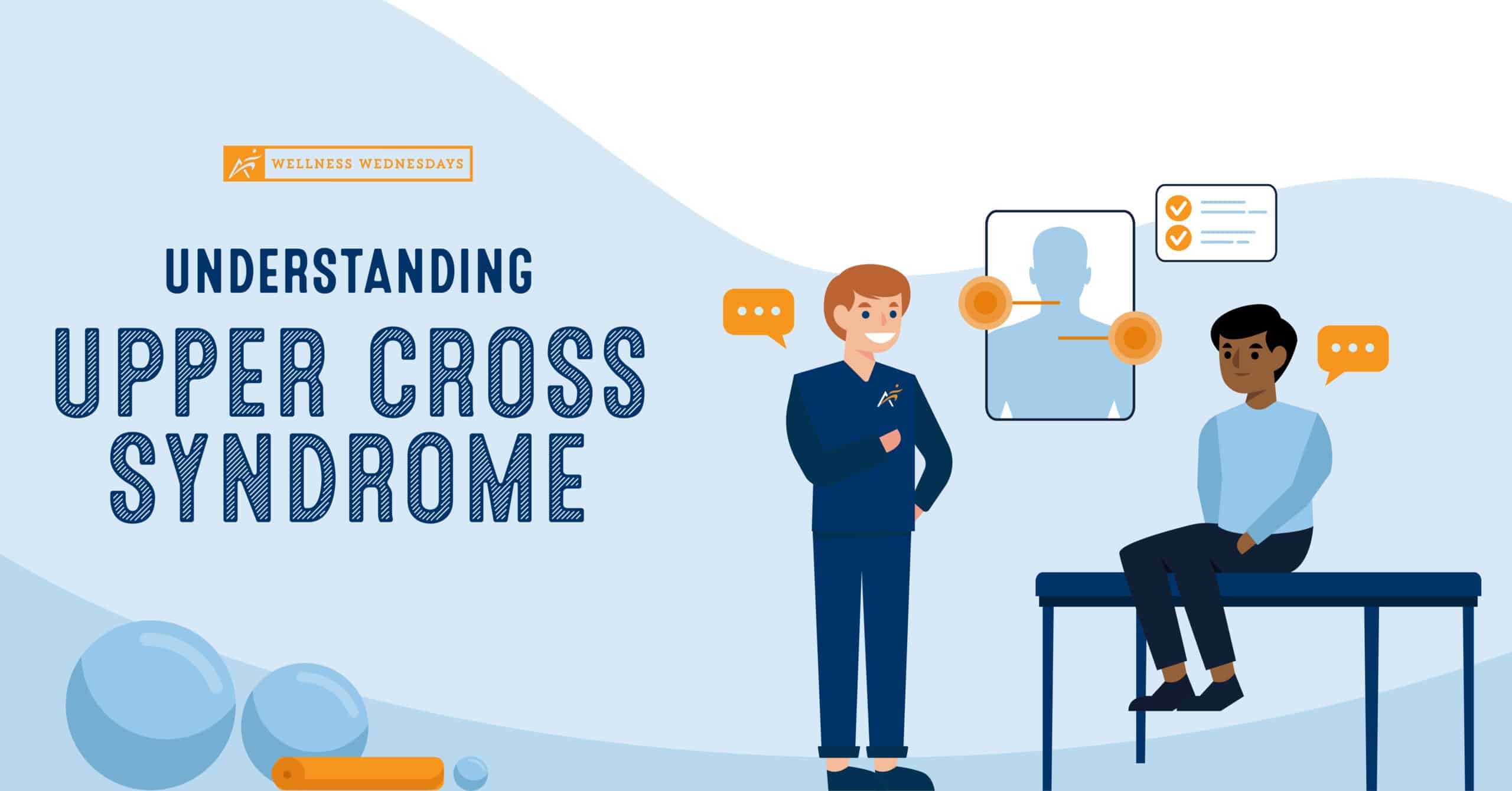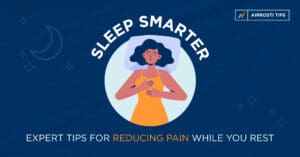At some point or another, you’ve probably experienced a sore neck or upper back after working for long hours. Usually the soreness goes away, but over time this neck and upper back pain can develop into a more serious condition called Upper Cross Syndrome.
Upper Cross Syndrome, also known as Upper Crossed Syndrome, is a muscular imbalance condition that occurs when overly tight chest and upper back muscles exert too much force on weak lower trapezius and neck flexor muscles. The resulting pulling effect causes the shoulders and neck to shrug forward, while the back hunches over.
Causes Of Upper Cross Syndrome
One of the main causes of Upper Cross Syndrome is poor posture, either when sitting or exercising. A person’s posture often worsens throughout the day as gravity puts more strain on the muscles of your back and neck. Poor posture when sitting can also be caused by looking down at your cell phone or computer, reading a book, or hunching over work or while gaming.
Symptoms can include a hunched back, worsening posture, headaches, chronic neck and upper back pain, and even degeneration of joints or tissue in the neck and upper back.
3 Exercises to Prevent Upper Cross Syndrome
Because Upper Cross Syndrome is caused by weakened, imbalanced muscles and poor posture, it’s important to work on building muscle groups equally when strength training, ensuring you are not favoring certain muscle groups over others. Stretching and maintaining proper posture throughout the day can also greatly reduce the likelihood of Upper Cross Syndrome.
1) Improve Your Posture
An easy way to avoid Upper Cross Syndrome is to practice good posture, sitting up straight with your head squarely between your shoulders. Avoid slouching or leaning heavily to one side while sitting or standing.
Whenever you feel yourself starting to slouch, try this posture-correcting exercise to realign your spine.
***Disclaimer: Always consult with your doctor before starting any exercise program. If you experience any numbness, tingling or reproduction of your symptoms, please contact your doctor.
Posture Correction Exercise
Stand with your back against the wall, feet hip-width apart an about a foot away from the wall, knees slightly bent.
Start by drawing your shoulders back against the wall, opening your back up through the front of the shoulders.
- Roll your pelvis forward or back so that there is a slight arch in the lower back. Control any excessive arch by engaging your lower core.
- To position your head, nod your chin slightly to bring the neck back to neutral, the plane of the face parallel to the wall.
- Hold this position for 5 seconds.
- Relax and complete 2 sets of 5 repetitions.
2) Stretch To Release Tension
If your neck and shoulder muscles start to feel tense, take a break from your work to move around and stretch. Below are a few stretches for your neck and shoulders that can help reduce muscle tension and alleviate pain associated with Upper Cross Syndrome.
Seated Levator Scapula Stretch
- Sit with your back straight.
- Tilt and turn your head to the opposite side.
- Nod your head forward until a stretch is felt along the side and back of the neck.
- Apply gentle pressure with your hand to increase the stretch if needed.
- Hold the stretch for up to 30 seconds.
3) Work on Your Upper Body
For this exercise, you will need an elastic band. You are going to be working on the scapular stabilizers or shoulder blade stabilizers.
- Tie your band off to something stable and grab either end without any resistance, then bring your shoulder blades back and down.
- Your elbows will stay straight, and your wrists will be locked out with this movement.
- However, your arms are not actually going to be moving. You are going to be stepping back against resistance and then holding for an isometric contraction.
- Now that your arms are right beside you, bring your shoulders back and down to opposite pockets and make sure you are not overarching your lower back.
- Keep your core tight throughout this exercise.Step back away from where you have the band tied, holding that contraction for the specified amount of time.
- You will start to feel this in the back of your shoulders and then back and around your shoulder blade area.
- Perform this for 3 sets of 15 to 30 second holds.
- Once you hold for the specified time, step closer to where you have the band tied off and then reset.
Eliminating Upper Cross Syndrome with Airrosti
Left untreated or undiagnosed, Upper Cross Syndrome can begin to hinder your daily life and activities you enjoy. In addition, your chances of developing chronic upper back and neck pain can increase.
At Airrosti, our Providers are trained to treat your pain right at the source. Your Provider will thoroughly assess your condition and create a personalized treatment plan. You will also receive resources and tools to continue your recovery at home.
Schedule an appointment with Airrosti today, either in-clinic or virtual, or call us at (800) 404-6050 for more information!
View our Medical Disclaimer here.









